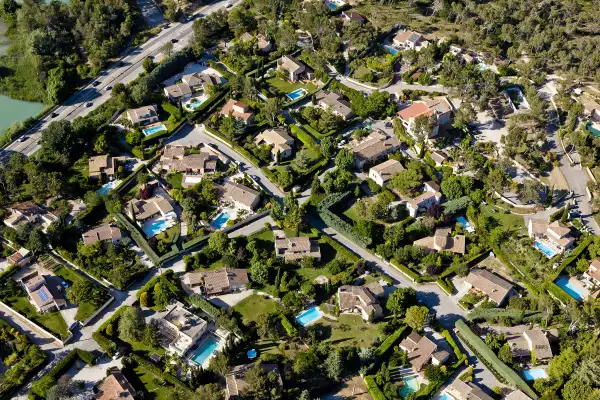Why 2 Iconic Household Status Symbols Are Disappearing

As you may have heard, California is suffering from an epic drought. Strict new regulations have been put in place just this week to severely limit the water use of households and businesses. Even before these rules were adopted, city crews had begun patrolling neighborhoods to issue warnings—and, when appropriate, fines—to property owners caught wasting water. Starbucks was recently pressured into pulling the plug on its California bottled water operation, while one city (Cupertino) canceled its fireworks show for the Fourth of July because the field where it normally takes place would need 100,000 gallons of water to cope with the crowds.
Two incredibly common household features have been targeted as wasteful as well. One is the front lawn, which has been demonized for decades as especially unnatural, unnecessary, and costly in dry climates such as California's. As the San Jose Mercury News reported in a story about the anti-lawn trend, "About half of California's residential water use goes to landscaping, and much of that to watering lawns." In wealthy communities where large lawns are common, landscaping can account for 70% or more of the household water use.
Throughout the state, rebates are available to help homeowners cover the cost of replacing lawns with more eco-friendly, low-maintenance landscaping. According to the Associated Press, the Metropolitan Water District of Southern California has experienced a 20-fold increase in rebate applications from homeowners interested in replacing their thirsty turf. In parts of northern California, rebates issued in the first four months of 2015 surpassed the total from all of 2014.
One Los Angeles homeowner explained how he didn't need all of the $5,000 rebate he received to convert his lawn to drought-friendly lavender, sage, and pampas-style grasses, so he used the leftover funds to go on a cruise. He'll be saving money each and every month now that he doesn't have to water the lawn too.
The other common water waster that has been drawing heat is the private household pool, considered much more of an extravagance than a boring, basic lawn. It would seem to be more of an overt water waster too, what with tens of thousands of gallons needed in one shot just to fill the thing up.
It comes as no surprise, then, that many homeowners are giving up on their pools. In San Jose, the San Francisco Chronicle reported, pool removal permits have outnumbered installations by a factor of four. Restrictions in many municipalities that ban homeowners from filling new pools certainly play a role in owners deciding not to install pools in the first place.
Yet the pool industry lobby is arguing that pools aren't nearly as wasteful as many people think. A new campaign called Let's Pool Together notes that lawns require far more water than pools. Therefore, as screwy as it might sound, by installing a pool instead of an expanse of grass, a homeowner is actually supposedly saving water.
Environmental experts question the pool lobbyists' math, noting that neither pools nor lawns help the water conservation effort. As for which wastes more water, Peter Gleick, president of the environment and sustainability research nonprofit Pacific Institute in Oakland, says that it's basically a wash.
More importantly, the pool-vs-lawn debate misses the point. "These are luxuries, and we're in a really bad drought," Gleick explained to the AP. "Everybody needs to step up instead of pointing the finger at the other guy."
